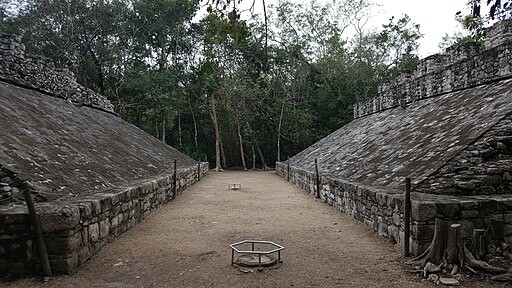For several millennia, healing and psychoactive plants have been involved in the medicinal and ceremonial rituals and practices throughout Mesoamerica. A new discovery suggests that the ancient Maya, known for their ball games, took sports rituals to a whole new level.
Consecrating Ball Courts
While conducting fieldwork in the ancient Maya city in Mexico, archaeologists found a dark stain in the soil, suggesting an unusual deposit. It was discovered in the ancient city of Yaxnohcah on the Yucatán Peninsula which thrived from 1,000 B.C. to 200 B.C. The excavation revealed a prominent plaza which was determined by the archaeologists as a ballcourt.
They collected samples of the soil and performed an environmental DNA analysis. It was revealed that the stain was actually the remains of plants known to have religious associations and medicinal properties mostly used by the ancient Maya. The details of the study were described in the paper "Psychoactive and other ceremonial plants from a 2,000-year-old Maya ritual deposit at Yaxnohcah, Mexico".
A team of archaeologists from Mexico, US, and Canada suggests that the plants were likely from a ritual blessing of the court during construction. They were used as ceremonial offerings to ensure good fortune and goodwill.
It was believed that the Maya likely conducted a ceremonial offering during the construction of the ball court. These people were known for playing ball games like pok-a-tok where players would use their bodies to hit a rubber ball. In some cases, they also used the ball courts for ceremonial purposes.
In our modern times, ball courts are seen as a place for recreation, but the Maya also consider them sacred. They would place the plants while building the ball courts as an offering to the gods. They did this to let them know that they were altering the landscape and as a way to get their blessings. The ritual also coincides with similar ceremonies found at other Maya sites.
Based on the result of the analysis, scientists concluded that the ceremonial plants were placed at the site around A.D. 80. What makes the discovery more impressive is the fact that the traces of plants lasted almost 2,000 years in a tropical climate.
READ ALSO: Remains of Man From Maya Civilization Holding Burial Offerings Unearthed in Mexico
Bundle of Psychedelics
Among the 15 plant species, the experts discovered Ipomoea corymbosa (xtabentun) and a climbing vine resembling morning glory, both with hallucinogenic properties. The team also found chili peppers (Capsicum sp.), Hampea trilobata (jool), and Oxandra lanceolata (chilcahuite).
According to biological sciences professor David Lentz from the University of Cincinnati, chili peppers were more than just a condiment for the Mayan culture. They were known for having medicinal applications and they were also often used in rituals. Meanwhile, xtabentun has the same physiological effects as LSD and experts have seen evidence of its use in a ceremonial context.
The concentration of the plants placed beneath the platform suggests that they were placed together as a bundle. Jool DNA also indicates that the other parts of the plants were wrapped in its leaves or a basket woven from its bark.
RELATED ARTICLE: New Archaeological Dig Finds Advanced Water Filters From the Maya Civilization
Check out more news and information on Maya Civilization in Science Times.















